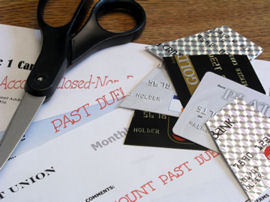Chapter 13 Bankruptcy // Thurston County
Chapter 13 bankuptcy is most often used to save homes from foreclosure, stop the IRS, or pay certain debts back over time.
Assuming you read the brief explanation of the Chapter 7 Bankruptcy, it should be clearly established that the process of filing is almost identical to Chapter 13 Bankruptcy. Although the “after filing” process is much more complex due to the way your debtors will be handled. Unlike in Chapter 7, this type of bankruptcy relies on a monthly payment you have to make to your creditors.
The process of calculating this monthly payment can be tricky, mostly because many of your creditors, the bankruptcy trustee, and the bankruptcy judge must be satisfied before the process is completed. You are assigned a “bankruptcy trustee” which is the person responsible for dispersal of your payment every month to your creditors. All of this relies on a plan filed with the bankruptcy court, which can be modified depending on the trustee’s recommendations.
Call (360) 753-5353
You will be responsible for making monthly payments for the next three to five years, once a bankruptcy judge approves your plan. Most clients don’t have to physically go to court, except for a brief “meeting of creditors” we attend with you, and we take care of dealing with the trustee and the creditors. Keep in mind this monthly payment is flexible if your circumstances were to change.
 Filing for Bankruptcy Chapter 13 is designed to stop harassing phone calls, lawsuits, repossessions, and other legal proceedings. Like in Chapter 7, the “Automatic Stay” rule applies to this type of bankruptcy. This stops any attempt at collecting debt completely, which means no more calls at dinner time or at work.
Filing for Bankruptcy Chapter 13 is designed to stop harassing phone calls, lawsuits, repossessions, and other legal proceedings. Like in Chapter 7, the “Automatic Stay” rule applies to this type of bankruptcy. This stops any attempt at collecting debt completely, which means no more calls at dinner time or at work.
Attorney Erin M. Lane (360) 753-5353

Copyright © 2012 - All rights reserved.
